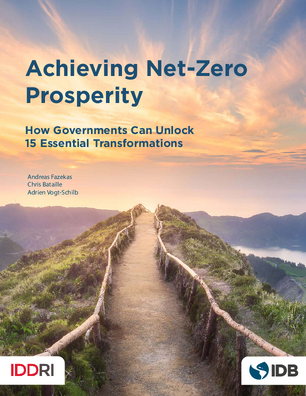Achieving Net-Zero Prosperity: How Governments Can Unlock 15 Essential Transformations
Date
Jul 2022
Reducing net-zero emissions is necessary to limit global warming to well below 2C and towards 1.5C, which are the temperature targets of the Paris Agreement. More than 50 countries around the world have set targets to achieve net zero emissions, usually by 2050, and most other countries are working on similar targets. Achieving these goals requires transformations in power, transport, agriculture, land use, buildings, industry and waste management. Although there are solutions to transitioning to a carbon neutral economy, including technological and behavioral changes, and they often come with economic, social or development benefits, many obstacles prevent their implementation. We bring together findings from academic and gray literature to identify 15 industry transformations that will drive net greenhouse gas emissions to zero. We then list the obstacles that prevent their adoption, such as barriers related to infrastructure, regulations, public and private finance, information and political economy issues. Finally, we provide more than 50 examples of sector-level government interventions that can address these barriers, such as building infrastructure, reforming regulations and subsidies, providing information and building capacity, and managing distributional impacts. Governments can use this information to guide the design of overarching climate strategies that translate the long-term goal of net zero emissions into a roadmap of required transformations in each sector. They can then work to identify and implement government interventions at the national, regional or local level to make them possible.




